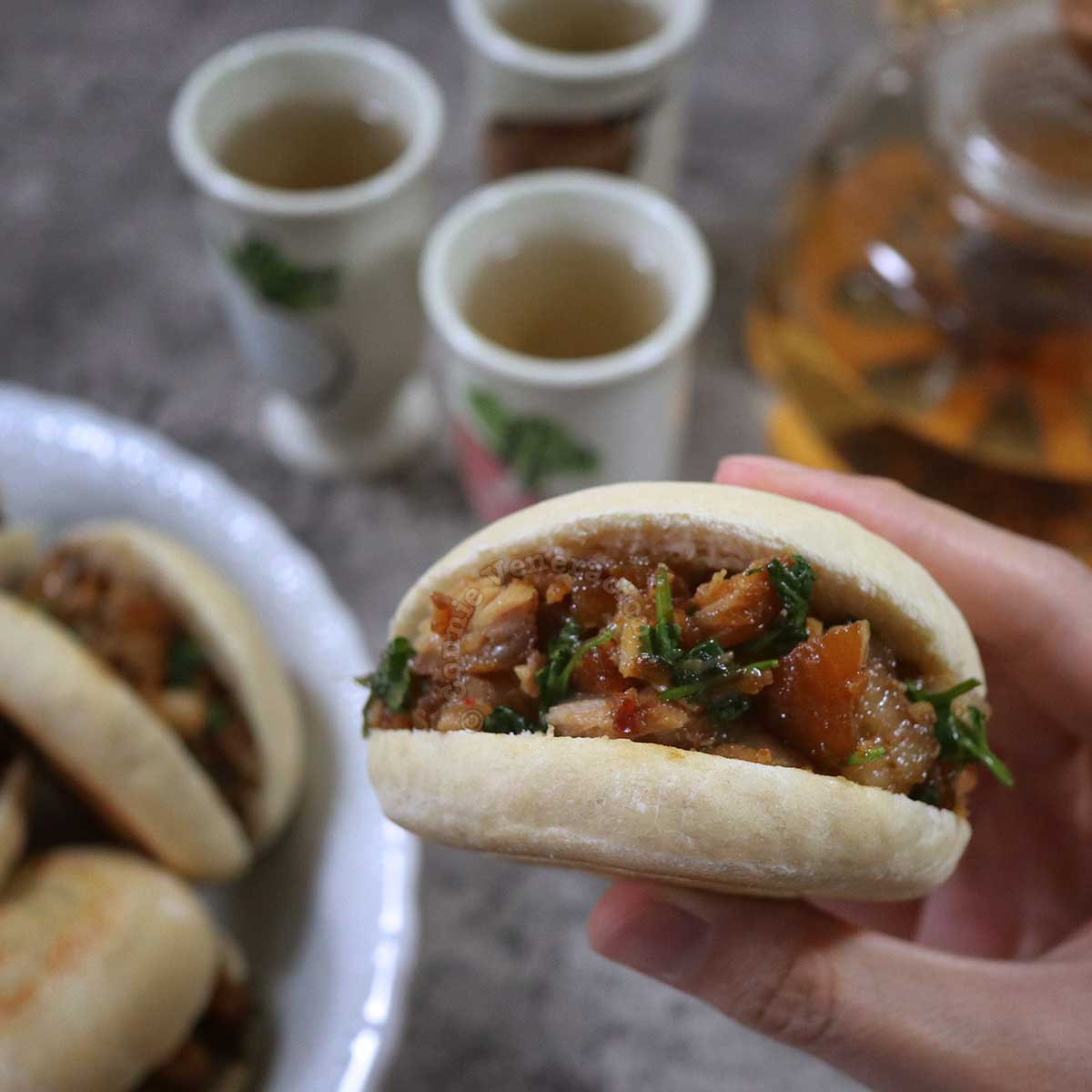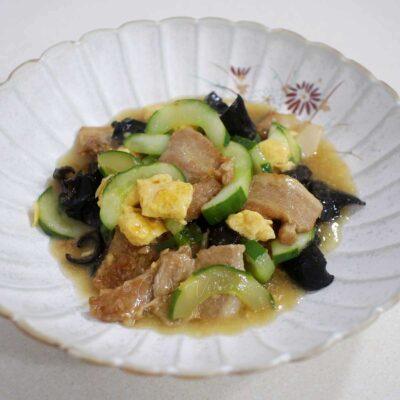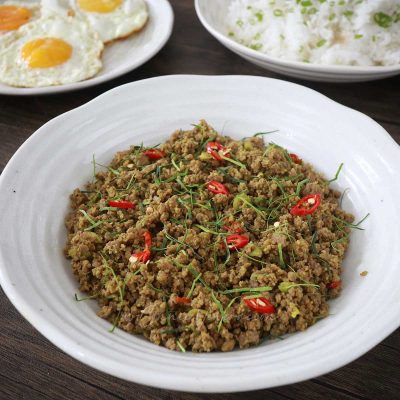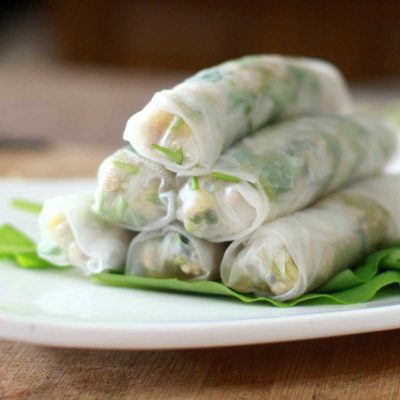It’s street food in China. A snack rather than a full meal. Its American nickname, Chinese hamburger, doesn’t really describe it with justice but, at least, it gives you an idea that it is a dish of meat nestled inside a bun.
But despite being a meat and bun combo, rou jia mo — which literally translates to “meat in a bun” — is nothing like hamburger. The filling isn’t a meat patty but, rather, chopped braised pork belly drizzled with some of its cooking liquid and tossed with cilantro. The flavor is magnificent. That’s what you get with long and slow cooking.
But it isn’t just flavor that makes this snack so good. It’s the texture of the bread too that’s crispy outside and lightly chewy inside. I could sing praises until you roll your eyes with boredom so I won’t.
When my daughter, Alex, volunteered to make rou jia mo at home, she did not expect to feel so tired by the time she served the sandwiches. So, yes, this is a rather complicated cooking project. Not for newbies as it involves not only braising pork belly to make the filling but making the bread too.
But if you’re up for the challenge, you will reap the unforgettable reward of eating something so good and you’ll realize that it’s worth all the effort.
The cooking process outlined below involves multi-tasking. If it sounds like too much work, I suggest that you cook the pork a day ahead, and let it steep in the cooking liquid overnight in the fridge. Make the buns the next day. Reheat the pork, chop and stuff into the slit buns.
Braised pork belly
The first step in cooking the pork is parboiling it. The process is essentially about removing impurities but it is also a good opportunity to start flavoring the meat.
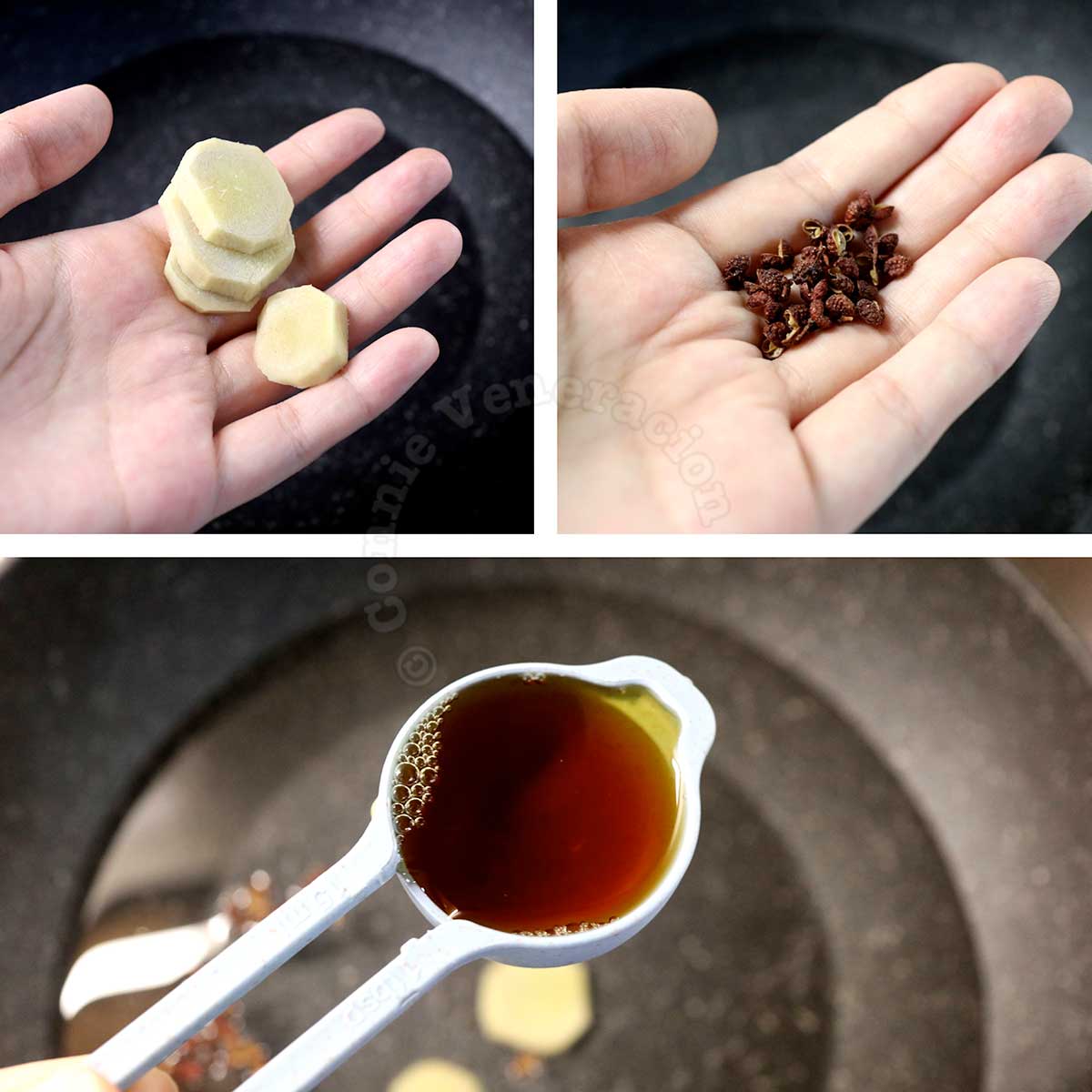
Boil water, and add ginger, toasted Sichuan peppercorns and Shao Xing wine.
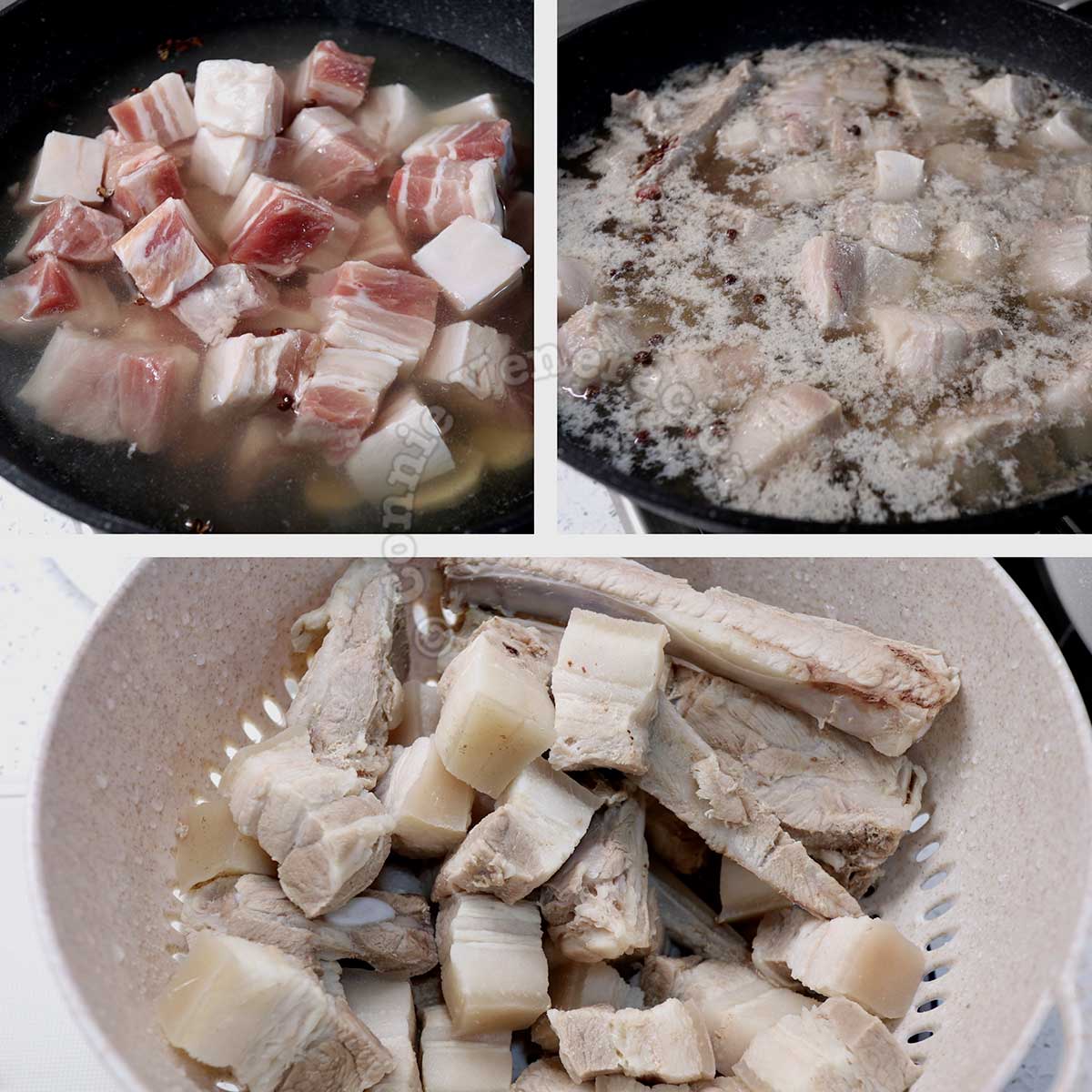
Drop in the pork belly and allow to boil until the surface of the liquid is covered with scum. Drain the pork, rinse thoroughly and wipe dry with a kitchen towel.
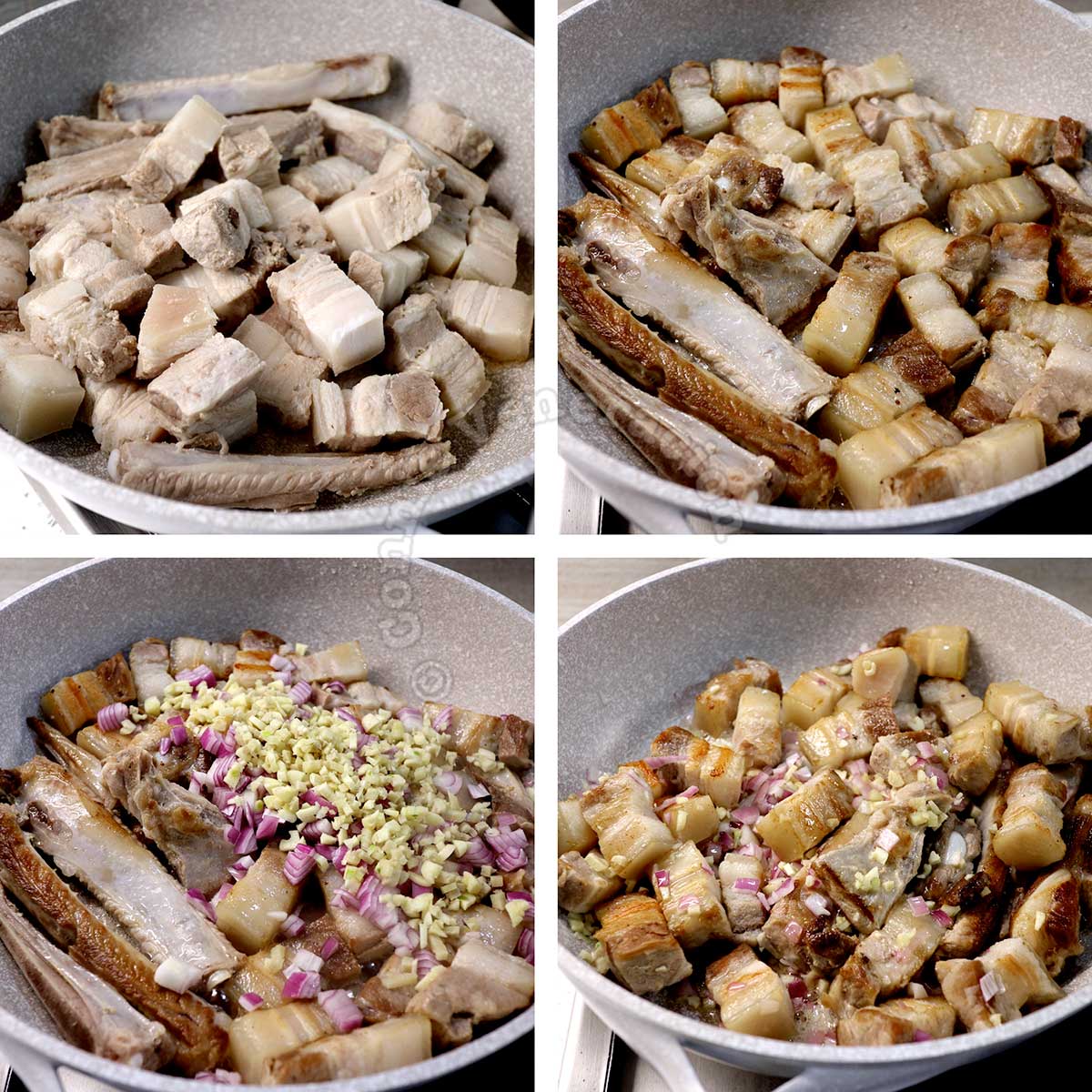
Spread the pork in a lightly oiled pan and cook, giving them quarter turns every few minutes, to brown all sides.
Stir in chopped shallots and ginger, and continue cooking cooking until aromatic. Then, add more spices.
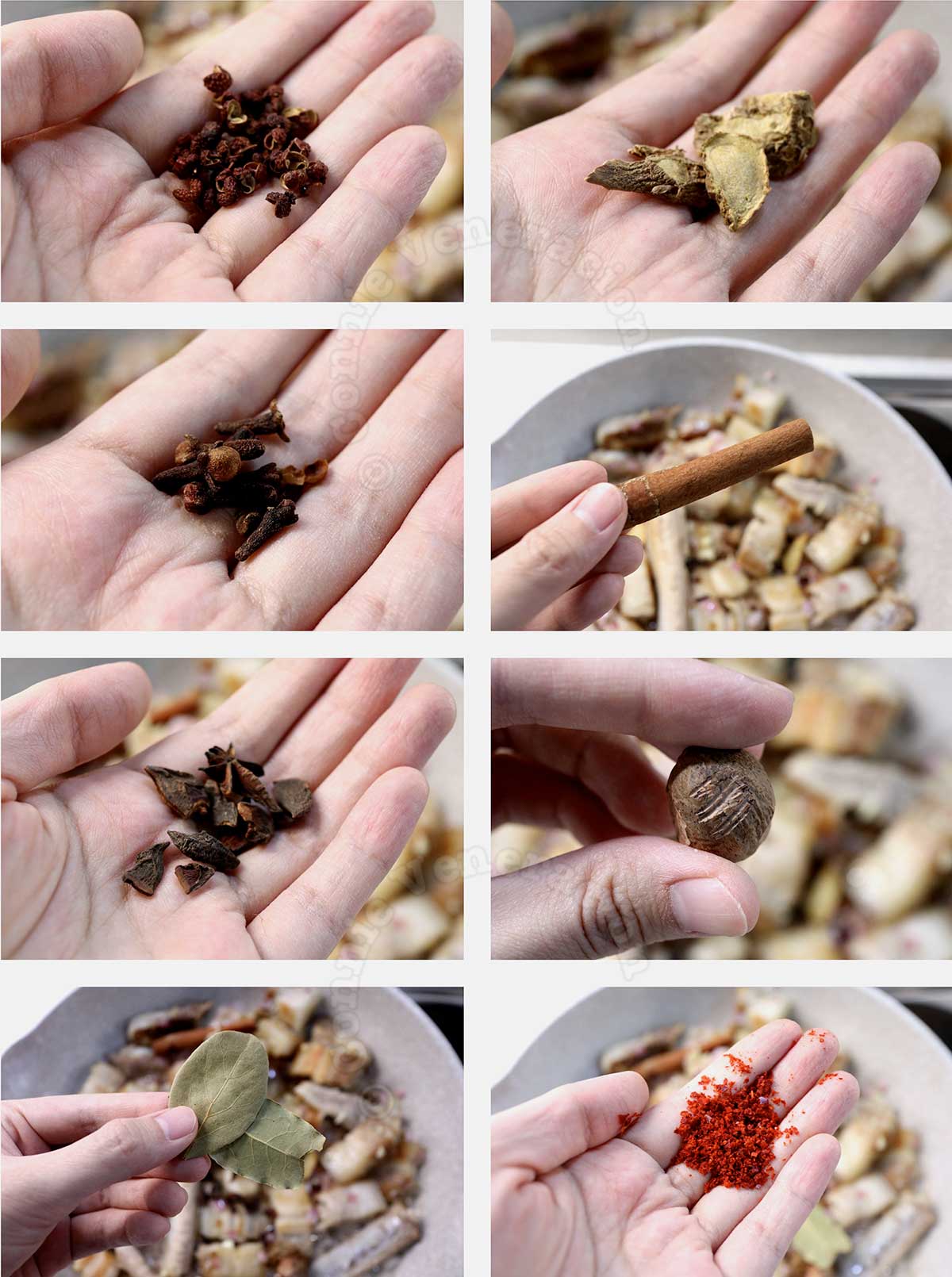
To the shallots and ginger already in the pan with the pork, add Sichuan peppercorns, galangal, cloves, cinnamon, star anise, a nutmeg, a couple of bay leaves and generous pinches of chili flakes.
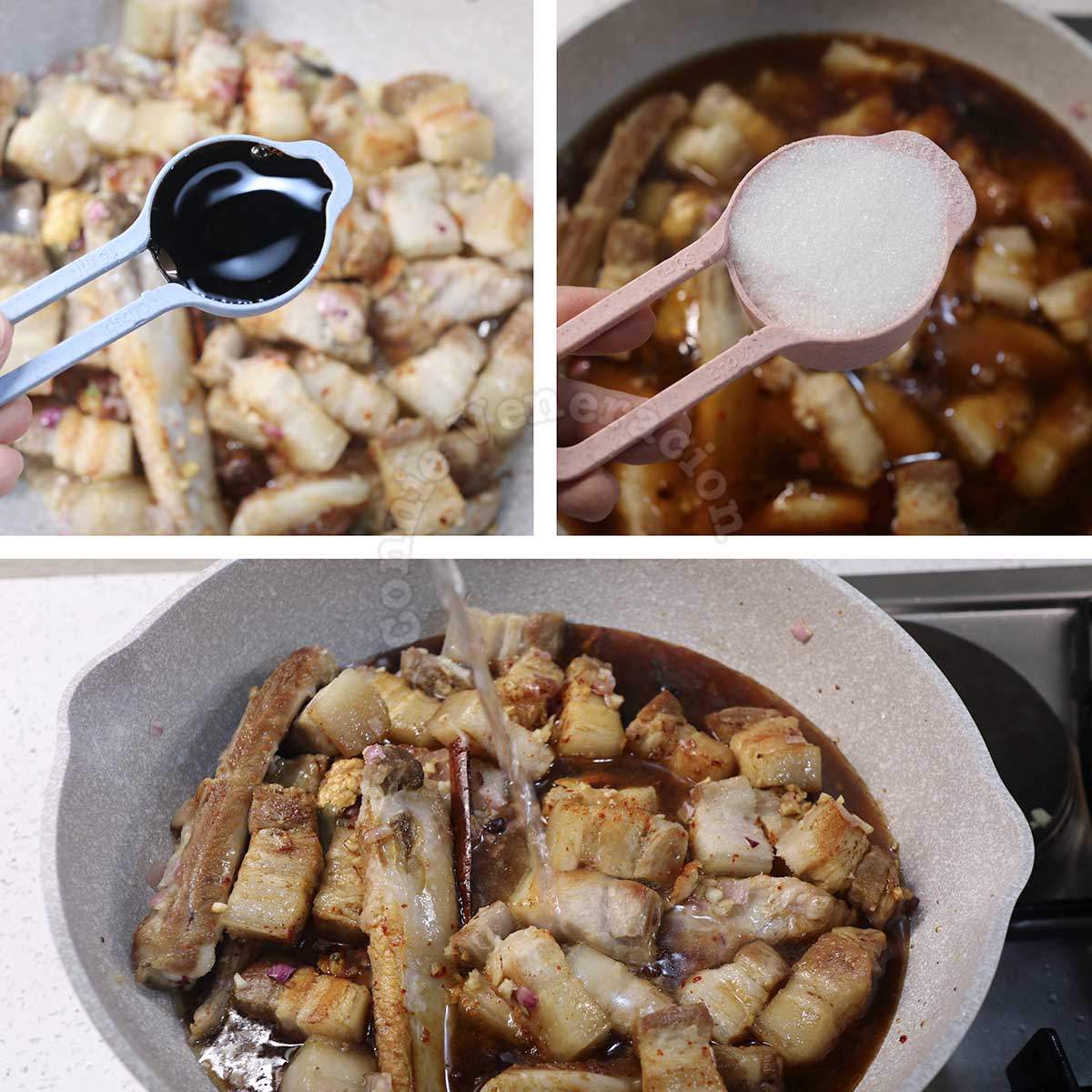
Next, add light and dark soy sauces, sugar and enough water to cover the meat.
Cover the pan and braise the pork belly with all those spices and seasonings over low heat until fork tender, and the fat and skin are gelatinous. That takes a while. An hour at the very least. Use that time to make the buns.
Buns (“mo”)
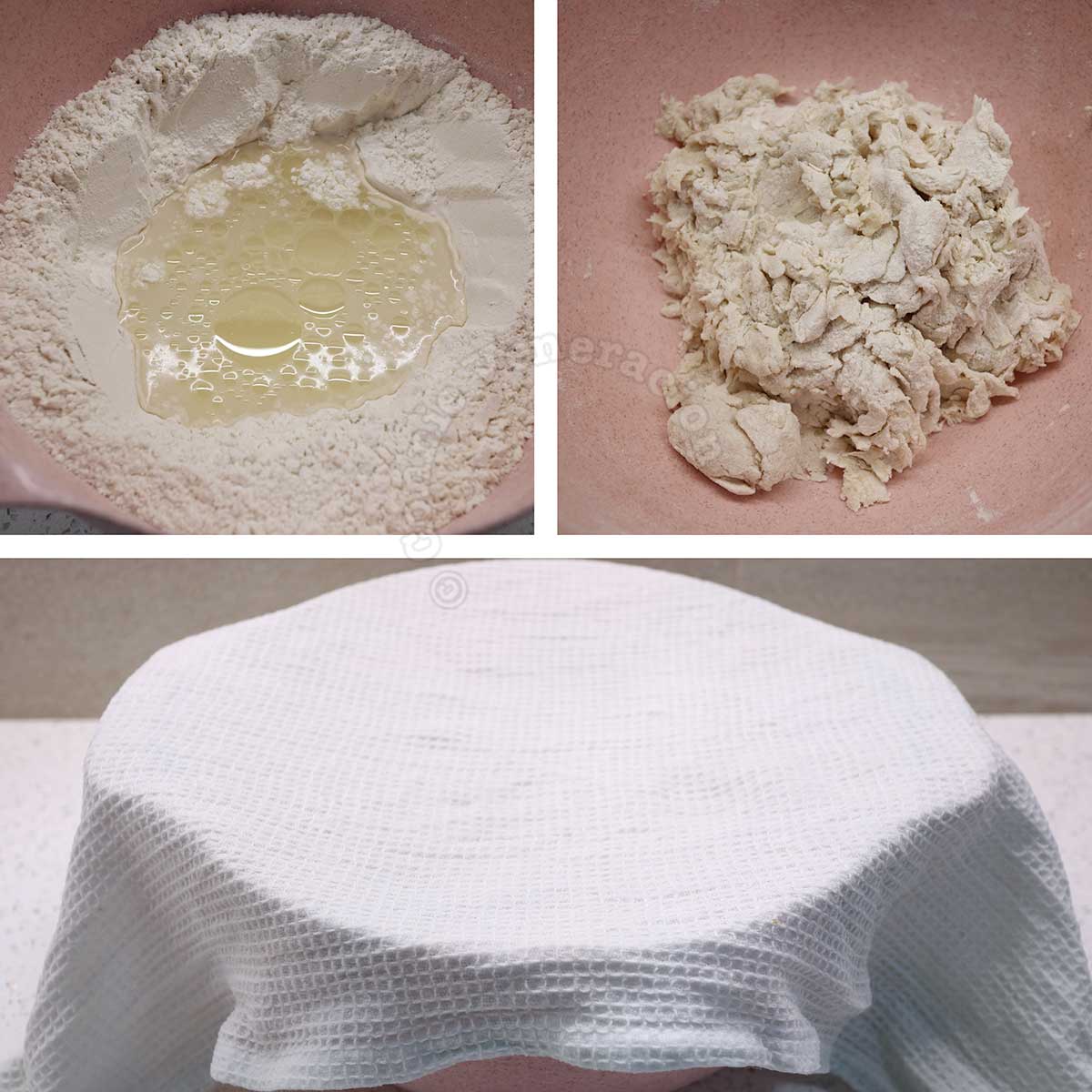
Sprinkle the yeast in water and leave for a few minutes. Instant yeast doesn’t really require blooming but, for the sake of even distribution, it’s safer to mix the yeast with water before adding to the flour.
Place your flour in a bowl, and add salt and oil. Pour in the yeast-water mixture and mix until the liquid has been absorbed. Transfer to a lightly floured work surface (or into the bowl of a stand mixer) and knead until it forms into a smooth ball. Around ten minutes of kneading should do it. Cover the bowl with a cheesecloth or a kitchen towel and leave the dough to double in size.

Transfer the dough to your work surface, cut into ten portions then roll each portion into a ball.
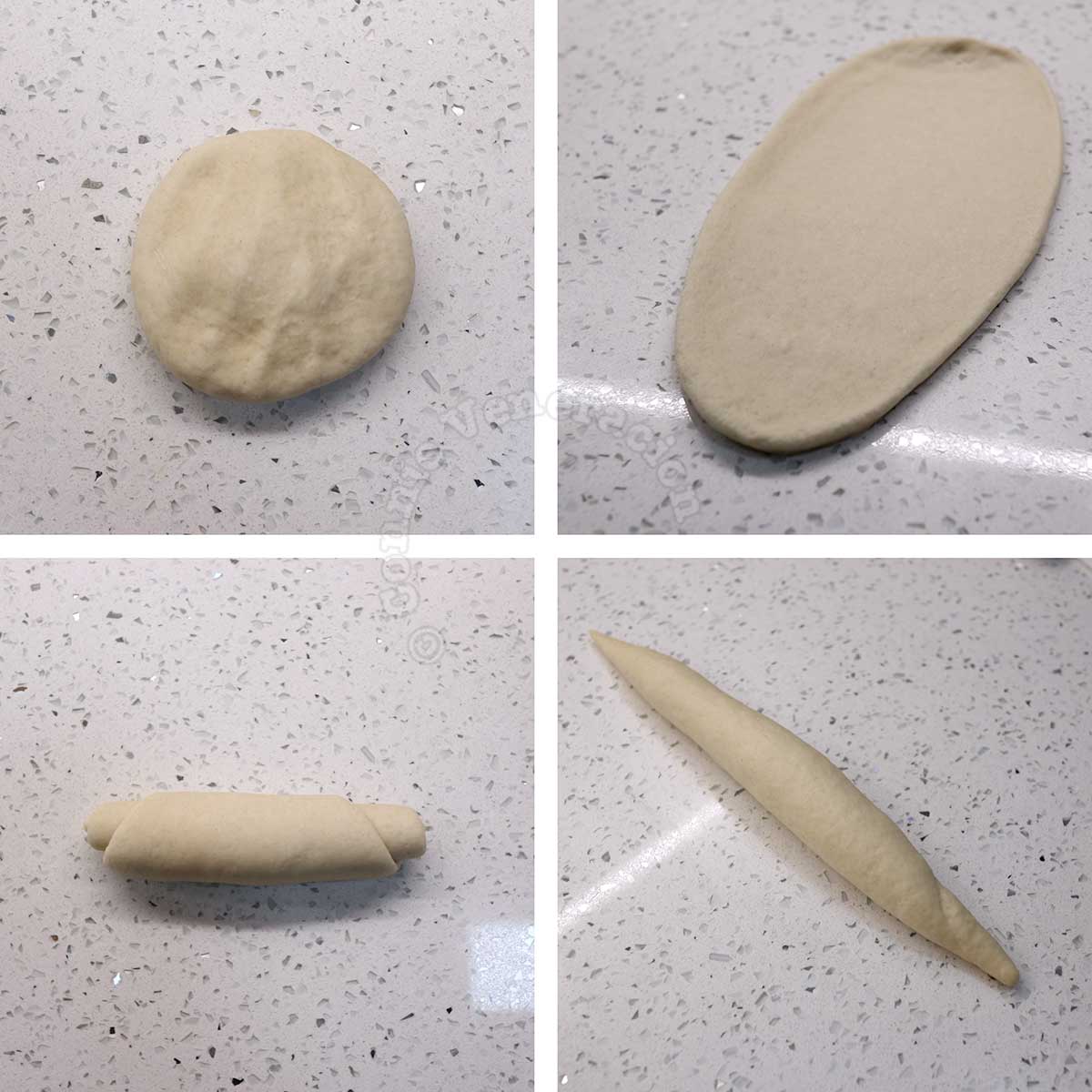
Flatten the ball into an oblong. Lift one short end of the oblong and start rolling the dough. Like a jelly roll, actually. Then, roll the dough against your work surface to make it twice as long.
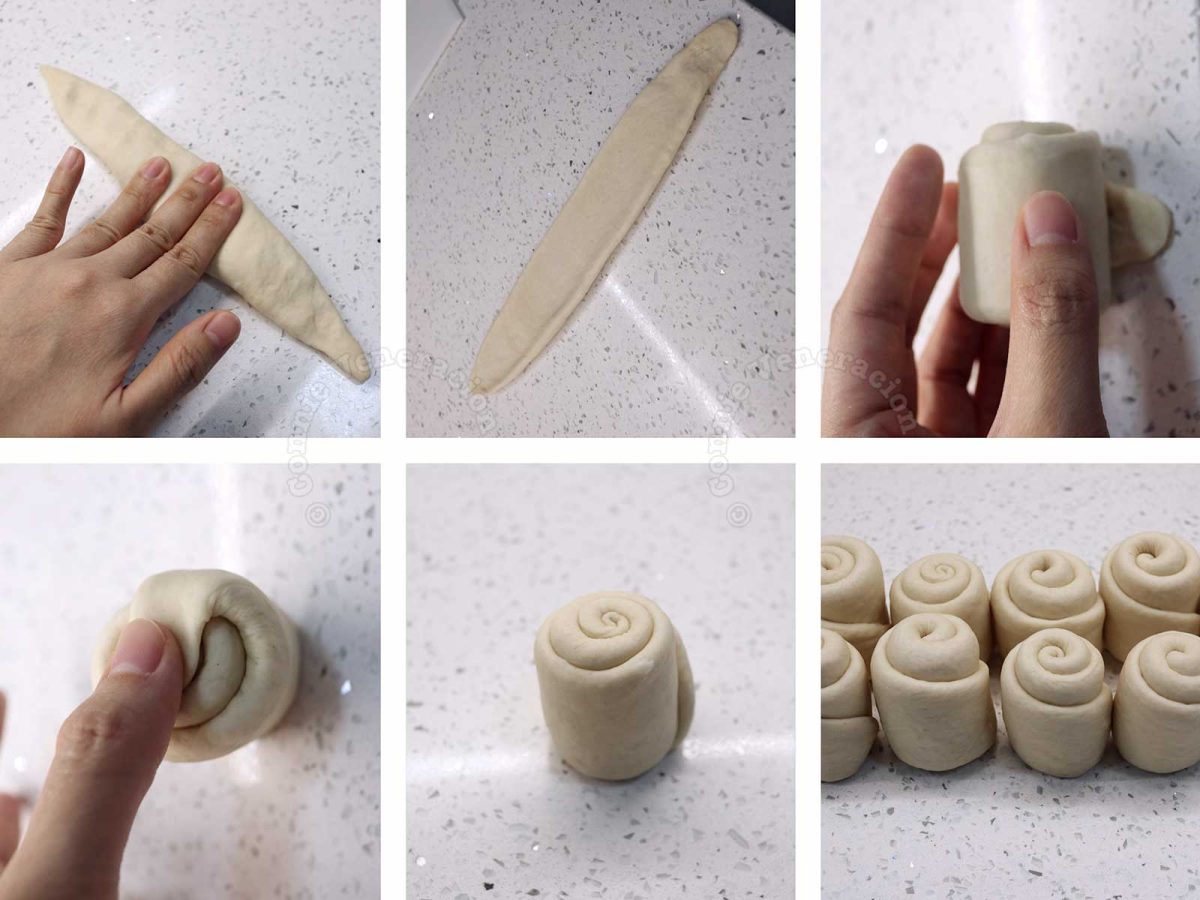
Flatten the elongated dough with your fingers then roll up again — this time, as though you’re making cinnamon rolls. Tuck the end of the dough underneath.
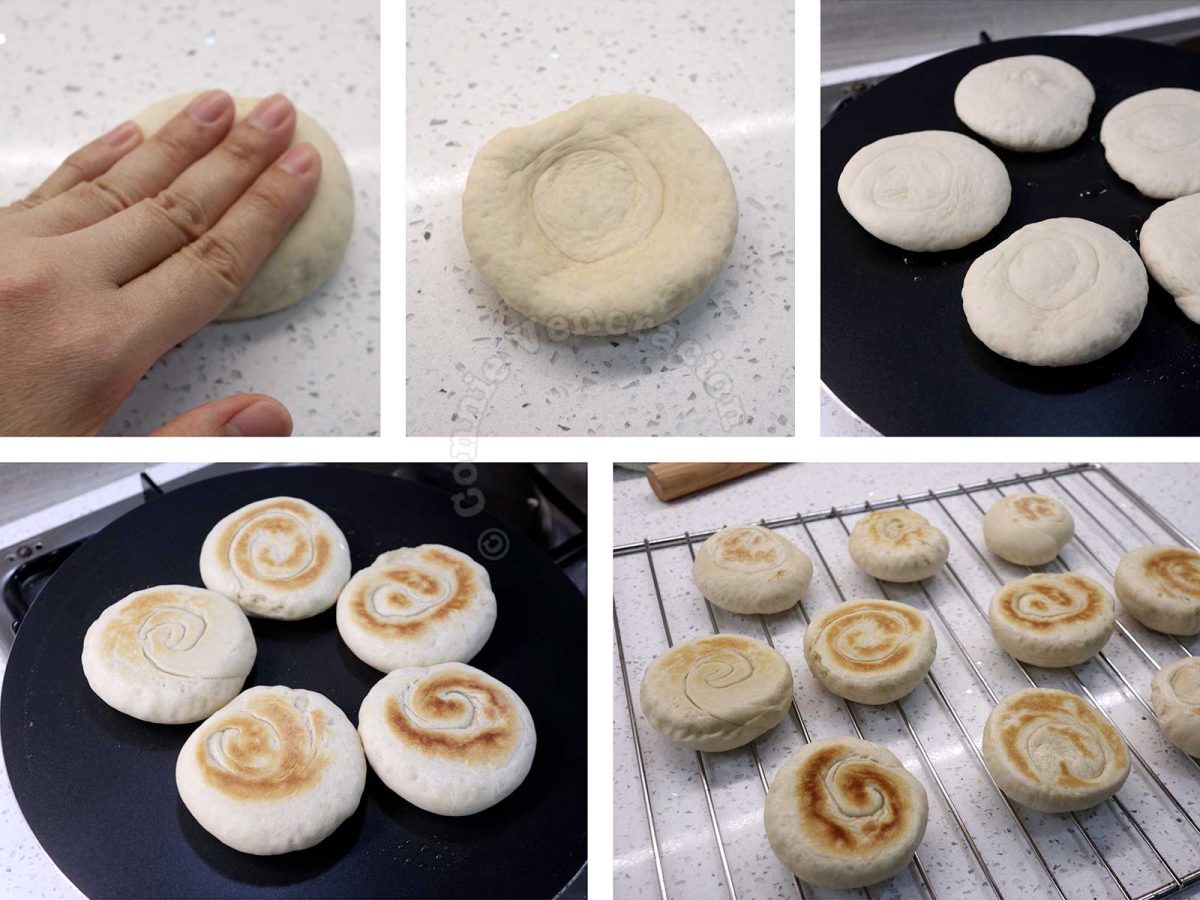
Now take the dough and flatten with your fingers to form discs about four inches in diameter.
Flatten again? Yes. What’s with the repeated steps of flattening and rolling? It is this process that gives the bun a unique texture. You’re actually forming layers as you flatten, roll, flatten and reroll. Those layers puff during frying to give the buns a lovely crisp crust.
Arrange the formed dough in a tray, cover with a kitchen towel and rest for about 10 minutes.
You’re now ready to cook the buns. No oven. Just a frying pan. No need to add oil either. Cook the buns, covered, over medium-low heat for two minutes per side to cook the dough all the way inside. Then cook them, uncovered, for a minute per side for a crispy crust.
Assemble your rou jia mo
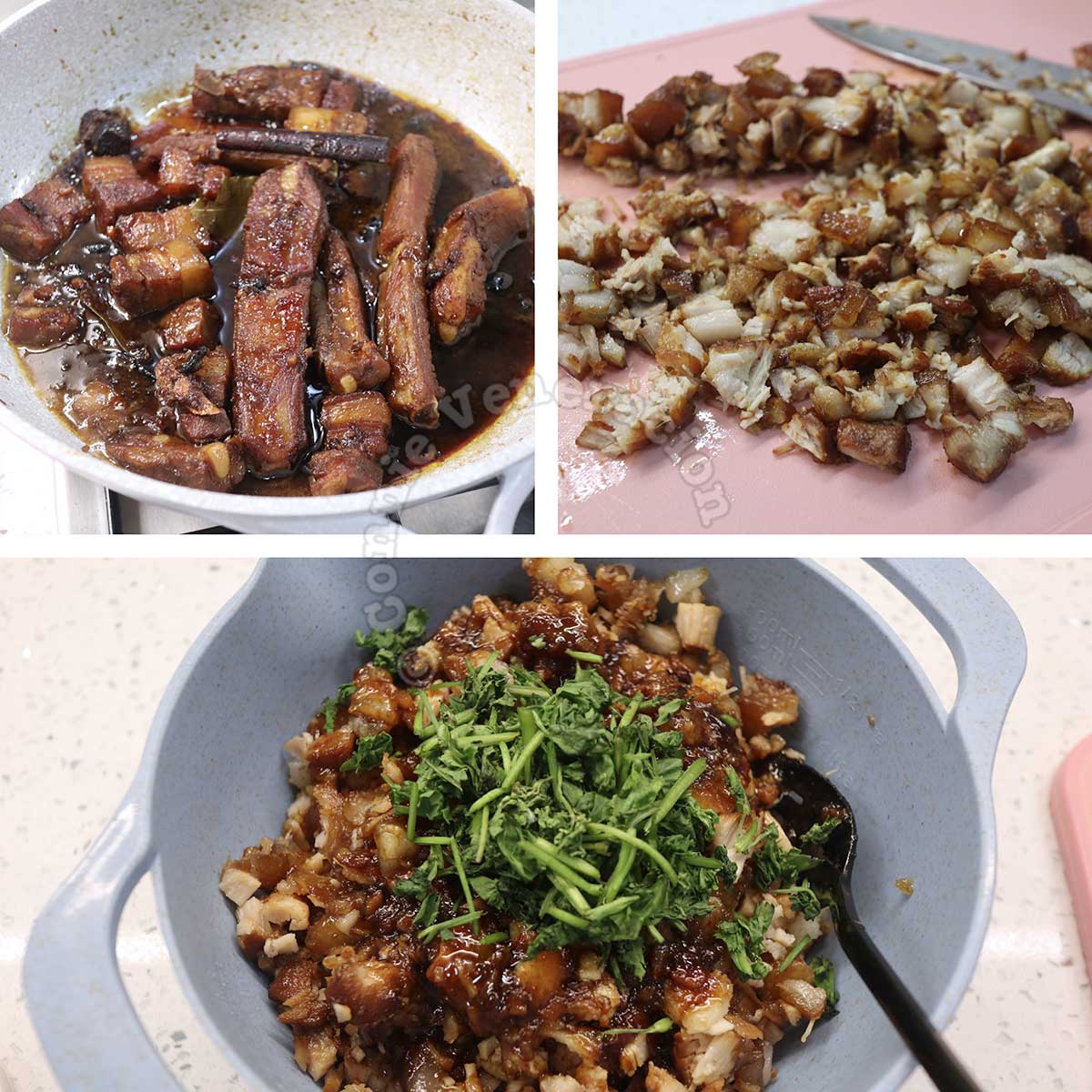
Scoop out your pork, transfer to a chopping board and cut into small pieces. Dump the cut pork into a bowl, drizzle in a few tablespoons of the cooking liquid, add chopped cilantro and toss.
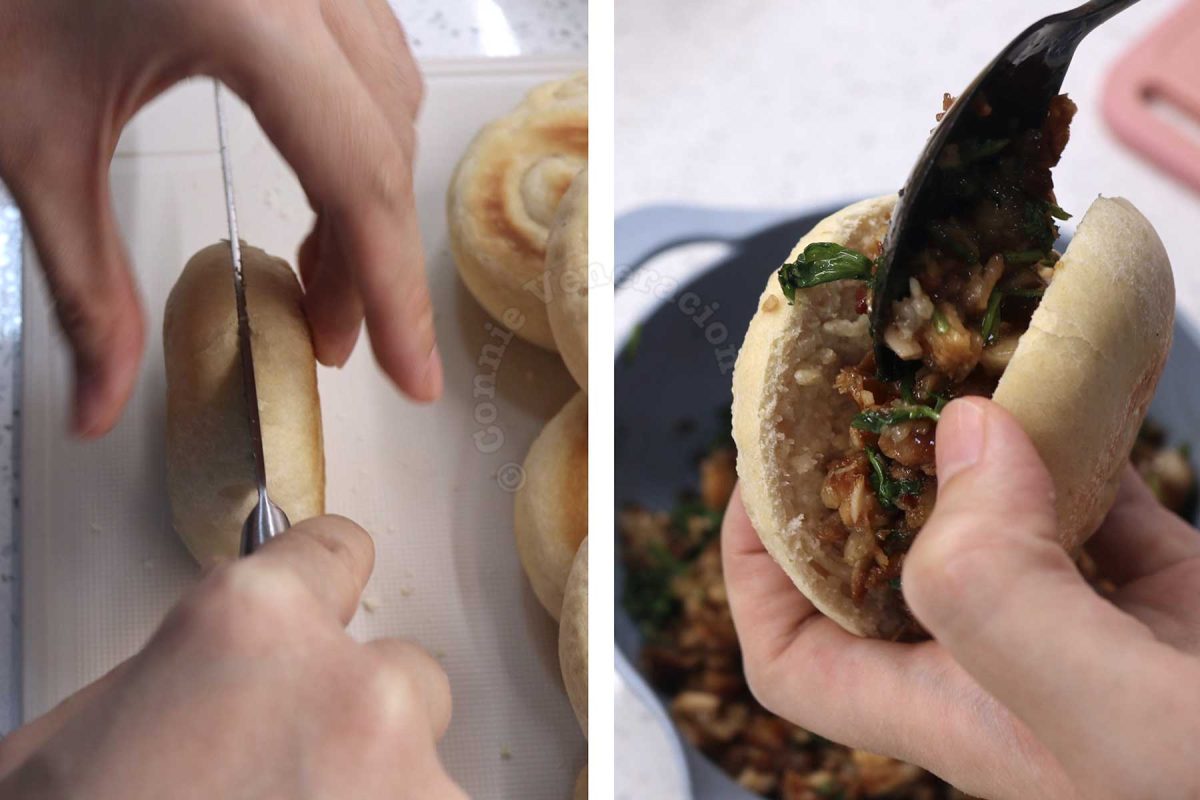
Slit the buns (don’t cut all the way through but only enough to form pockets), stuff with the pork filling and serve.
Chinese hamburger (rou jia mo)
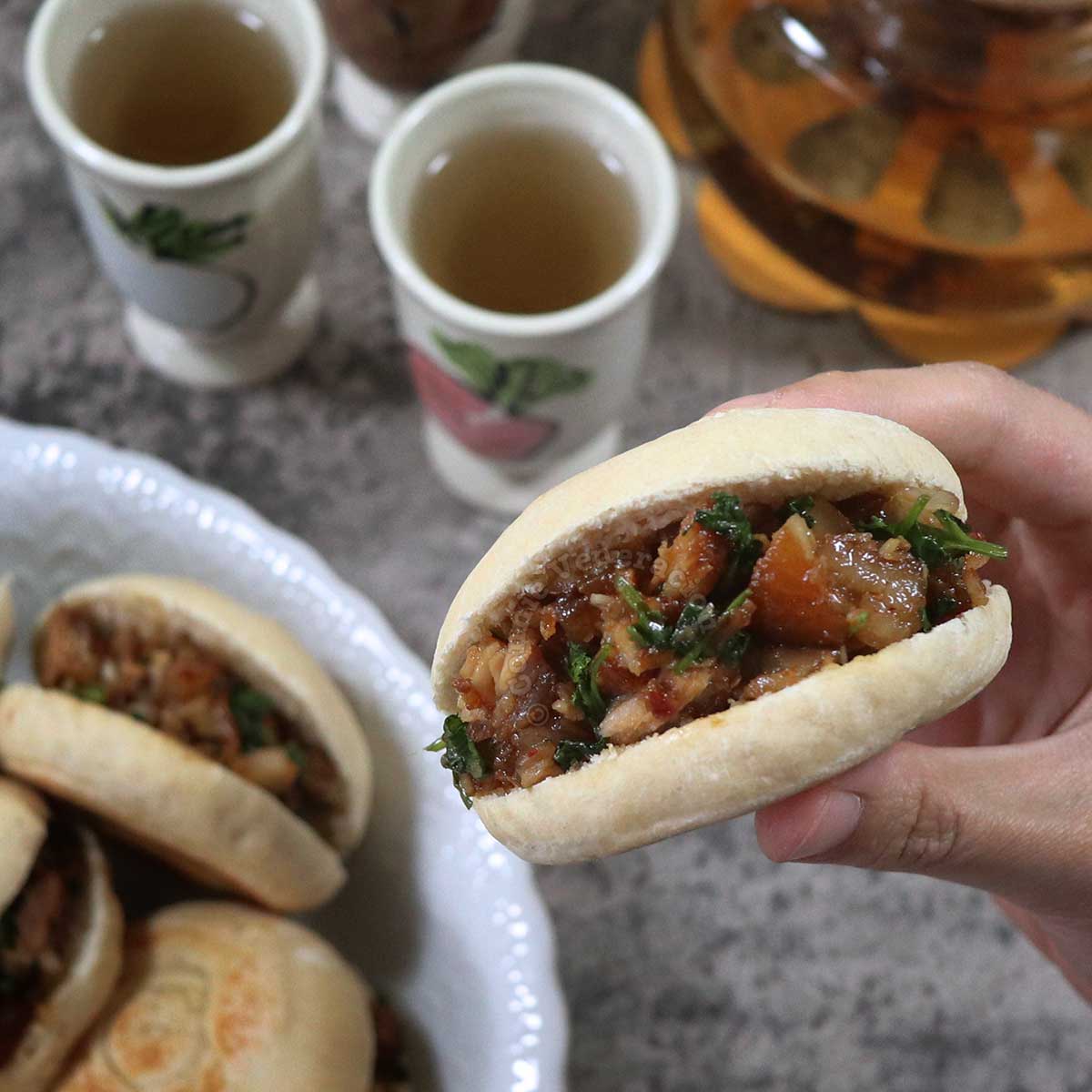
Ingredients
To parboil the pork
- 1 kilogram pork belly cut into two-inch cubes
- 4 slices ginger
- 1 teaspoon Sichuan peppercorns toasted in an oil-free pan
- 2 tablespoons Shao Xing rice wine
To braise the pork belly
- 1 tablespoon cooking oil
- 2 shallots peeled and chopped
- 1 two-inch knob ginger peeled and chopped
- 1 teaspoon Sichuan peppercorns toasted in an oil-free pan
- 3 to 4 slices galangal dried is used here
- 6 cloves
- 1 stick cinnamon
- 2 to 3 star anise
- 1 nutmeg
- 2 bay leaves
- 1 teaspoon chili flakes
- 2 tablespoons light soy sauce
- 2 tablespoons dark soy sauce
- ¼ cup white sugar
- salt to taste
To make the buns
- 2 teaspoons instant dry yeast
- 1 ¼ cups lukewarm water
- 3 ½ cups all-purpose flour
- ¾ teaspoon salt
- 2 tablespoons vegetable oil
To complete the sandwiches
- chopped cilantro
Instructions
Parboil the pork
- Pour about six cups of water into a pot and heat.
- Add the ginger, Sichuan peppercorns and Shao Xing wine.
- When the water boils, drop in the pork belly and stir to separate.
- Allow to boil, uncovered, for about ten minutes.
- Scoop out the pork and place in a strainer.
- Rinse under the tap to remove all impurities.
- Spread the rinsed pork in a kitchen towel and rub to remove surface moisture.
Braise the pork
- Brush cooking oil in a pan or wok and spread the pork belly.
- Cook the pork belly cubes, turning them occasionally, until the surface is browned.
- Add the chopped shallots and ginger. Cook, stirring often, until aromatic.
- Add all the spices, soy sauces, sugar and enough water to cover.
- Cover the pan, set the heat to low and cook the pork until tender (see note #1 below).
Make the buns
- Sprinkle the yeast over the warm water and leave for a few minutes.
- Place the flour in a mixing bowl. Add the salt, oil and the yeast-water mixture.
- Mix until all the liquid has been absorbed.
- Transfer the dough to your work surface and knead until smooth or use a stand mixer with the dough hook attached (see note #2 below).
- Form the dough into a ball, drop into a bowl, cover the bowl with a kitchen towel or a cheesecloth and leave to double in volume.
- Dump your dough onto your work surface and divide into ten portions.
- Roll each portion into a ball.
- Flatten each ball with your fingers. With a rolling pin, roll into an oblong about a quarter inch in thickness.
- Take one short end of the flattened dough, fold in and roll until you reach the other short end.
- With your hands, roll the dough against your work surface until double in length.
- Take one end, fold in and roll until only about an inch of the other short end is exposed. Pull the visible end and tuck it in by folding it underneath.
- Repeat with the rest of the dough balls.
- Take your rolled dough and flatten with your fingers to form discs about four inches in diameter.
- Arrange all the formed dough on a tray, cover with a kitchen towel and rest for 10 minutes.
- Place a thick-bottomed frying pan on the stove and set the heat to medium-low.
- Arrange the discs of dough on the heated pan at least an inch apart (they will expand so keep them apart).
- Cover the pan and cook the buns for about two minutes. Flip, the buns, cover and cook the opposite sides for another two minutes.
- Remove the cover and cook each side for one minute.
Assemble the rou jia mo
- Scoop the pork into a chopping board and cut into small pieces.
- Place the chopped pork into a bowl, drizzle in a few tablespoons of the cooking liquid to moisten, add chopped cilantro and toss well.
- Slit the buns to form pockets.
- Spoon the pork into the pockets.
- Serve the pork-filled buns immediately.
Notes
- Taste the braising liquid occasionally and add salt, as needed. Do not be tempted to add more soy sauce to prevent the meat from turning too dark.
- If the dough feels too stiff, add more water during kneading, no more than a tablespoon at a time, to make a soft and elastic dough.

